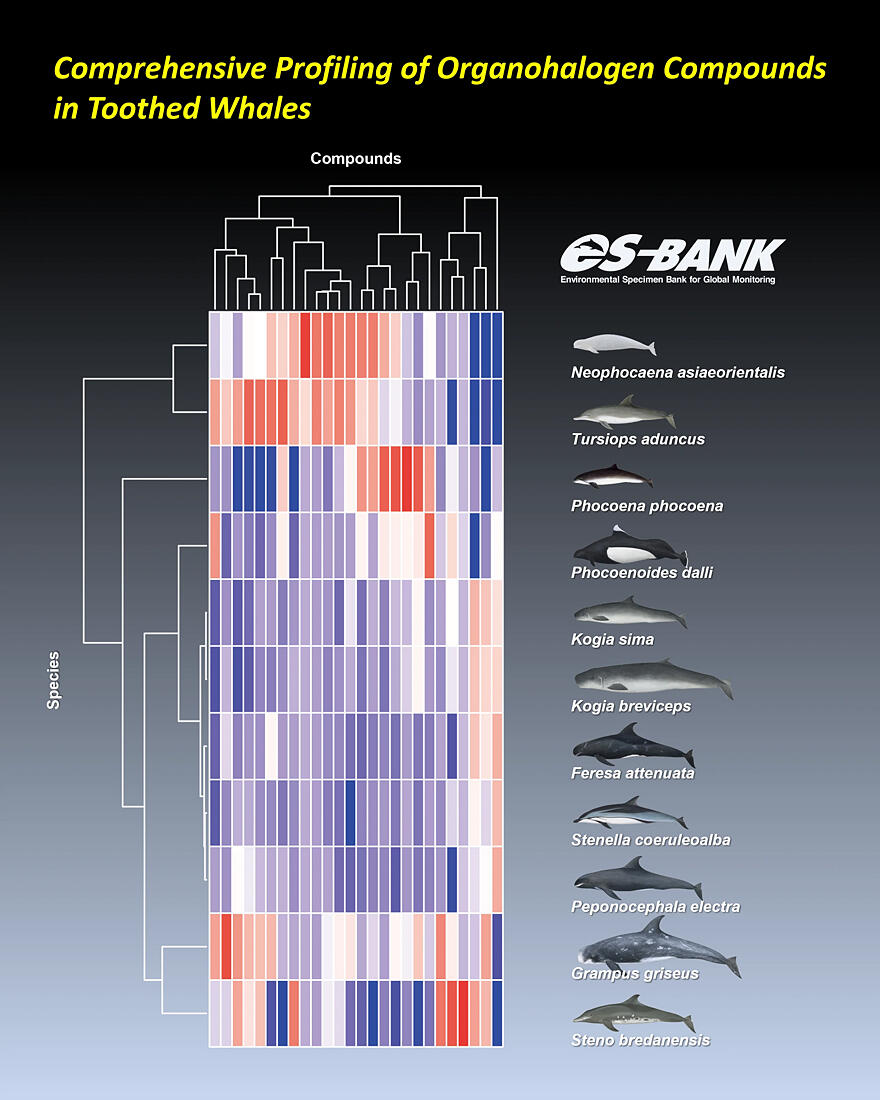Professor Tatsuya Kunisue from the Center for Marine Environmental Studies at Ehime University announced on March 5 that examining thick subcutaneous blubber samples (sebum skin samples) from 11 species of toothed whales stranded along Japanese coasts enabled researchers to detect over 300 types of organohalogen compounds (isomers) that accumulate in patterns specific to each species. These compounds originate from artificial pollutants, natural marine products, and substances of unknown origin, with accumulation profiles potentially reflecting each whale species' habitat and migration patterns. Their findings were published in the international academic journal Environmental Science and Technology on February 14.

Provided by Tatsuya Kunisue, Ehime University
Toothed whales have long lifespans and occupy high trophic levels in marine ecosystems, exposing them to various chemicals through food chains. Significant exposure to persistent organic pollutants (POPs) made up of organohalogen compounds including polychlorinated biphenyls (PCBs) continues today, raising health concerns for these cetaceans. Recent North American studies have reported exposure to not only existing POPs but also suspected artificial pollutants with similar physicochemical properties and toxicity (POP-like substances) and natural marine substances in several whale species. However, little was known about the differences and factors affecting the accumulation concentrations and composition patterns of diverse organohalogen compounds across species.
In response to this, the research group utilized blubber samples from 11 toothed whale species preserved in Ehime University's environmental specimen bank (es-BANK), conducting gas chromatography-mass spectrometry (GC/MS) and cluster analysis to elucidate species-specific compound accumulation profiles.
The results confirmed high concentrations of not just artificial chemicals but also natural marine products and substances of unknown origin in the blubber samples of the 11 toothed whale species. The study detected 313 organohalogen compounds, revealing accumulation concentrations and composition patterns of these compounds that likely reflect differences in each whale species' habitat, depth, and migration routes. The analytical methods established may provide clues not only to chemical pollution but also to understanding habitat environments and life histories.
Kunisue commented: "Toothed whales, as top predators in marine ecosystems, are known to accumulate high concentrations of persistent organic pollutants (POPs) through food webs. However, until now, no comprehensive quantitative analysis of organohalogen compounds (OHCs) other than POPs had been conducted across multiple toothed whale species. By performing comprehensive screening and quantitative analysis of OHCs in 11 species of toothed whales stranded along Japanese coasts, we revealed the accumulation of 313 OHCs, and that the accumulation profiles differed by habitat. These findings may serve as important baseline data for future analysis of OHC exposure sources and risk assessment specific to each toothed whale species. Additionally, as we found species that accumulated high concentrations of naturally occurring OHCs (halogenated natural products: HNPs) in addition to those of human origin, research on the impact assessment of HNP exposure, which has been hardly investigated, is also necessary."
Journal Information
Publication: Environmental Science & Technology
Title: Comprehensive Screening of Anthropogenic and Natural Organohalogen Compounds in 11 Species of Toothed Whales Stranded along Japanese Coasts: Species-Specific Accumulation Profiles and Potential Indicators for Understanding Their Habitats
DOI: 10.1021/acs.est.4c14352
This article has been translated by JST with permission from The Science News Ltd. (https://sci-news.co.jp/). Unauthorized reproduction of the article and photographs is prohibited.




